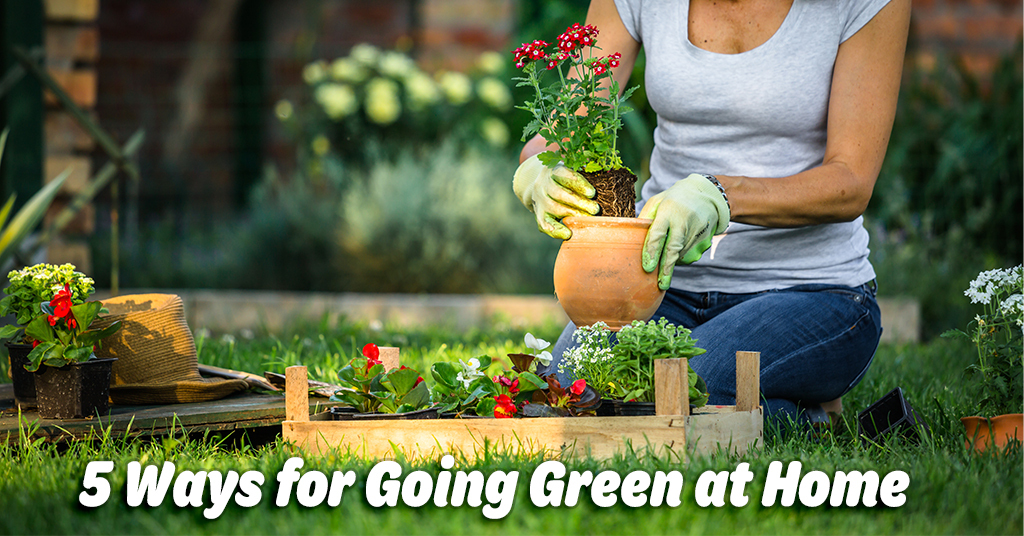Going Green Part Three: 5 Ways for Going Green At Home
One of the biggest ways you can live a greener lifestyle is by implementing some long-term eco-friendly solutions at home. We are all familiar with small-scale, active solutions such as reducing water usage and unplugging unused electronics, but long-term solutions can take your energy conservation to the next level. And the best part is that most of these green solutions are passive, which means that you will rarely have to think about them.
Research Local Renewable Energy
We all use energy in our daily lives, from turning on a light to regulating the temperature of our homes. A major way you can minimize the impact of your energy consumption is by switching to a renewable energy source. This isn’t always an option, but you can research local renewable energy options and check with your utility company to find out more.
Install Timer Switches Around Your Home
A common tip for going green is to simply use less power, but sometimes lights still get forgotten and left on for hours. Rather than stressing yourself out over trying to remember every light, you can replace your regular light switches with energy-efficient in-wall timers. Timer switches automatically turn the lights off after a pre-selected amount of time, so you don’t have to worry about turning them off yourself. There are lots of different kinds of timers to choose from, including countdown timers with preset buttons and programmable timers that feature a digital interface. Timers reduce energy consumption by making sure that the light is only on when you’re using it, because you can always trust that it will turn off on its own. With a timer light switch, you truly can just set it and forget it!
Choose Energy-Efficient Appliances
Large appliances don’t need replacing often, but the next time you’re in the market for a washer, dryer, or refrigerator, try to go for an energy-efficient model. These are easy to spot, as they are always certified with a government-backed Energy Star label. This special label means the Environmental Protection Agency supports these products and ensures that each one is independently certified to deliver the utmost efficiency, performance, and savings, in addition to protecting the environment.
Get Your Food From Sustainable Sources
Instead of wasting money on overpriced, processed foods from the big-box grocery stores, try picking up produce from your local farmers’ markets. Not only will you be getting fresh food straight from the source, but you’ll also be supporting your local economy. If you want to step up your sustainability even more, you can start an herb and vegetable garden right in your backyard for a steady flow of fresh, affordable, and organic ingredients. If you don’t have a backyard or other space for a garden, see if you can join a local community garden. Community gardens are especially great because you can trade fruits and vegetables with your neighbors for even more variety.
Make Your Own Household Cleaners
Store-bought cleaning solutions are full of harmful chemicals and usually housed in plastic. The best way to limit waste and ensure safe ingredients is to take matters into your own hands and just make the cleaners yourself. This may sound scary at first, but it’s surprising how much you can do with some white vinegar and a few drops of lemon essential oil. This article from Upstairs Downstairs Cleaning offers some genius ideas for homemade cleaners. You will quickly see that there is an eco-friendly DIY alternative to just about every cleaner, from Lysol wipes and Windex to carpet cleaners and a heavy-duty bleach alternative. And as an added bonus, homemade cleaners are cheaper, too!



